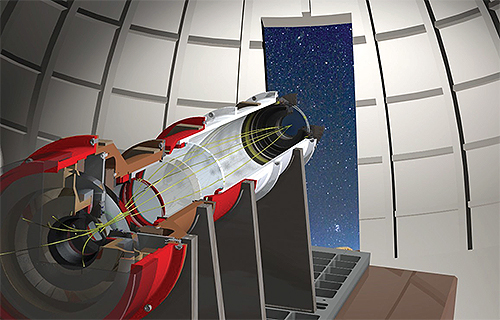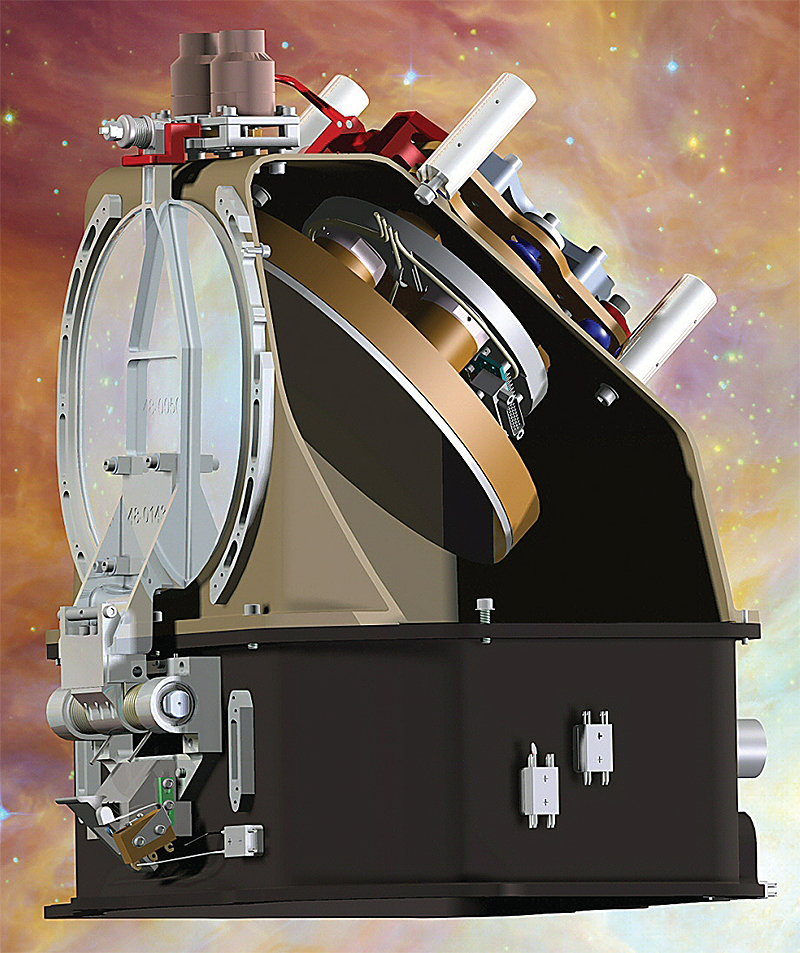Space Dynamics Laboratory (SDL), a unit of the Utah State University (USU) Research Foundation, is a nonprofit research corporation owned by USU. SDL specializes in electro-optical sensor systems, calibration, thermal management, reconnaissance systems, and small satellite technologies. SDL developed and operated one of the first successful space-borne, solid-hydrogen-cooled infrared sensors, developed real time reconnaissance data visualization hardware and software for operational military applications, delivered successful sensors and subsystems for more than 400 space-borne and aircraft-based payloads, and initiated the first student involvement program for the NASA Space Shuttle.

The lens barrel focuses light onto a detector. The barrel is currently in Antarctica looking at high altitude clouds.
SDL uses Solid Edge software with synchronous technology for commercial design projects. Synchronous technology combines the speed and flexibility of direct modeling with the precision control of dimension-driven design. Dave McLain, who supervises the mechanical design team at SDL, says, “Solid Edge with synchronous technology is a new CAD technology. Having used five different CAD systems over the past 25 years, Solid Edge offers a different thought process that eliminates the complexity of previous systems.” John Devitry, CAD administrator at SDL and USU engineering professor, adds, “Solid Edge is easier to use. You don’t get bogged down in learning the CAD system.”
Synchronous technology eliminates gaps
“We use Solid Edge on all of our projects,” says McClain. “We use many vendors and lots of models and parts, and often receive files that don’t translate cleanly. Some files are almost unusable due to open surfaces. Solid Edge allows us to redevelop these files and use them virtually immediately. Using the region command, we are able to repair the models that would have failed by fixing the open surfaces.”
SDL has used the software for several years. It was instrumental in the design of the Floating Potential Measurement Unit – instrumentation that monitors electrical charging on the International Space Station, protecting the safety of astronauts from electrocution during space walks. The software also played a role in the development of the Geosynchronous Imaging Fourier Transform Spectrometer, designed to reduce risk for the Hyperspectral Environmental Suite (HES) program.
“Our first project using Solid Edge was completing the design of the Wide-field Infrared Survey Explorer (WISE) science instrument,” says McClain. WISE is a cryogenically cooled, infrared telescope designed to provide a complete stellar infrared map more than 1,000 times more detailed than previous surveys. It was launched in December 2009 and is now returning stunning images in four different wavelengths.

The purpose of the Aeronomy of ice in mesophere (AIM) mission is to study the Polar Mesospheric Clouds (PMCs) that form about 83 km above the earth’s surface in summer and mostly in the polar regions. The goal is to resolve why PMCs form and why they vary. AIM will measure PMCs and the thermal, chemical, and dynamic environments in which they form to determine associations between these clouds and the meteorology of the polar mesosphere. Studying PMC variables has been proposed as a potential method for establishing indicators of global change. SDL designed, fabricated, calibrated, and tested the primary sensor for the AIM suite: SOFIE (Solar Occultation for Ice Experiment). SOFIE combines IR/UV solar occultation, Gas Filter Correlation Radiometry (GFCR) and broadband Differential Absorption Radiometry (DAR) by solar image tracking. The SOFIE sensor is one of three sensors aboard the AIM satellite. Using a Pegasus XL rocket carried aloft by a carrier aircraft, NASA launched the AIM mission into low-Earth orbit from Vandenberg AFB April 25, 2007. AIM has successfully completed its first season of PMC observations in the northern hemisphere and is currently conducting PMC observations in the southern hemisphere.
Software in students’ hands
Devitry says, “After our SDL successes using the software, we immediately transitioned to teaching Solid Edge with synchronous technology for conceptual design. The technology is so effective that my usual 30-minute quizzes were being completed in minutes by my students. They are learning more, acquiring greater depth, and doing so faster than before. Prior to synchronous, we couldn’t cover a lot of important material because we’re spending time teaching the CAD interface. New we spend more time on key engineering topics such as motion and analysis.
“Our students work on a gamut of real world projects, designing parts, running them through the machine shop, assembling instruments, and calibrating them. With more extensive engineering knowledge, many students immediately go on to work for industry leaders.”
Siemens
www.siemens.com
Space Dynamics Laboratory
www.sdl.usu.edu
::Design World::
Filed Under: Aerospace + defense, ENGINEERING SOFTWARE, Student programs, TEST & MEASUREMENT





Tell Us What You Think!